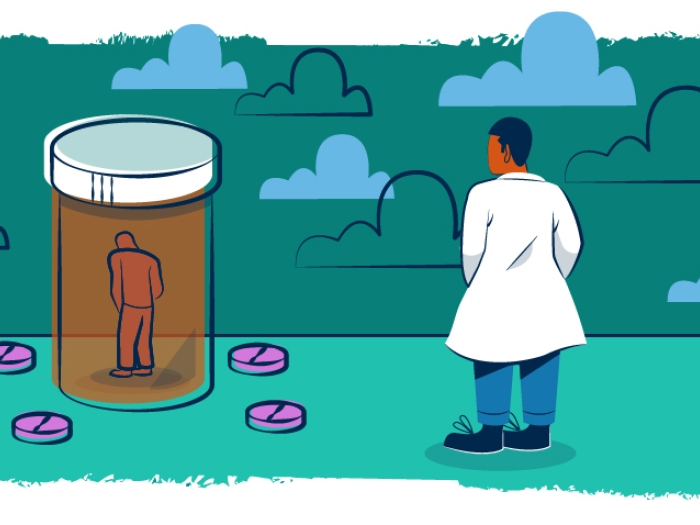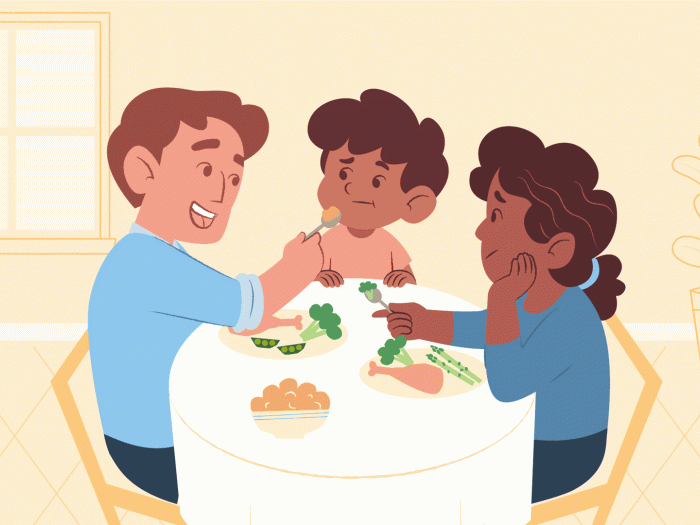U-M researchers turned to Twitter to see whether online discussions about food can help inform policy makers.
12:07 PM
Author |

Whether it be arguments about the merits of pumpkin spice or who makes the best chicken sandwich, food is an ever-popular subject on social media. Michigan Medicine researchers turned to Twitter to see what this online culinary discussion reveals about the people behind the posts, and whether the platform could serve as a real-time tool for assessing information valuable to public health researchers.
"We wondered whether Twitter-based analysis could help us understand communities better," says V.G. Vinod Vydiswaran, Ph.D., assistant professor in the Department of Learning Health Sciences at the U-M Medical School and assistant professor of information at the U-M School of Information, who is lead author on a new paper in the Journal of the American Medical Informatics Association.
Researchers used community-based surveys to gather demographic and health-related behavior information that might help explain health status and disparities between groups. For Vydiswaran and an interdisciplinary group of U-M researchers, the focus was on food, and whether there were differences between how groups of residents of a given region discussed food.
Their analysis began by scoring different food-related keywords, including types of foods, modes of preparation, and popular restaurants based on their healthiness. Foods were defined on a scale of very unhealthy to very healthy, based on dietary attributes such as trans-fat or added sugar.
Social determinants of health, such as neighborhood walkability, mentions of food deserts, safety concerns — these kinds of references show up in tweets.V.G. Vinod Vydiswaran, Ph.D.
Next, using Twitter's API, an interface which allows software access to Twitter's data, the group gathered geo-tagged tweets from more than 1,200 census tracts around the Detroit area. With a data set of more than 800,000 food-related tweets from over 62,000 unique tweeters, the group conducted sentiment analysis, determining whether the content of each tweet trended negative or positive. They removed tweets belonging to celebrity influencers or marketing tweets that might artificially affect the online conversation.
"We found differences in the kinds of foods people tweet about in neighborhoods," says Vydiswaran, with the top keywords in more affluent neighborhoods including terms like Starbucks, coffee, and vegan versus terms like pizza, tacos, and bacon in less affluent neighborhoods. Net healthiness scores were best explained by affluence, fast food density, and the number of tweets, with less affluent areas discussing unhealthier foods.
Next, they looked for correlations between Twitter content and neighborhood demographics, finding that neighborhoods with a higher percentage of African-American residents had more positive sentiment about food, both healthy and unhealthy. Says Vydiswaran, "We hypothesize that one possible reason behind this is that the enjoyment of food is a part of the culture."
They also found that more affluent areas had less positive sentiment about food than other topics, with less affluent areas having more positive food sentiment.
Finally, they looked at the correlation in food-related tweeting and mortality rates from the top five obesity-related causes of death: diabetes, heart failure, kidney failure, stroke and heart disease.
"In the multivariate regression analysis, accounting for other neighborhood measures such as affluence and percentage African American, our Twitter-based food healthiness measure was still significantly correlated with one obesity-linked condition, heart failure," says Vydiswaran.
The authors note that tweets are an imperfect measure of behavior (for example, they don't necessarily account for the amount of food consumed) and that Twitter users may not represent the total population of an area. However, more traditional surveys also suffer from bias and are often much harder to conduct than social media analysis.
"We are proposing using social media as an additional source of input for policymakers to understand neighbors," he says. "Social determinants of health, such as neighborhood walkability, mentions of food deserts, safety concerns — these kinds of references show up in tweets and could act as additional input for researchers wanting to understand how they affect health more generally."
The research was funded by U-M's MCubed program and included Daniel M. Romero, Ph.D., Xinyan Zhao, Deahan Yu, Jin Xiu Lu, Bradley Iott, and Tiffany Veinot, M.L.S., Ph.D., of the U-M School of Information; Iris Gomez-Lopez, Ph.D., of the U-M Institute for Social Research; Ana Baylin, M.D., Dr.P.H., Erica C. Jansen, M.P.H., Ph.D., Philippa Clarke, Ph.D., and Veronica J. Berrocal, Ph.D., of the U-M School of Public Health; and Robert Goodspeed, Ph.D., of the U-M Taubman College of Architecture and Urban Planning.
Uncovering the relationship between food-related discussion on Twitter and neighborhood characteristics, Journal of the American Medical Informatics Association, https://doi.org/10.1093/jamia/ocz181

Explore a variety of healthcare news & stories by visiting the Health Lab home page for more articles.

Department of Communication at Michigan Medicine
Want top health & research news weekly? Sign up for Health Lab’s newsletters today!





